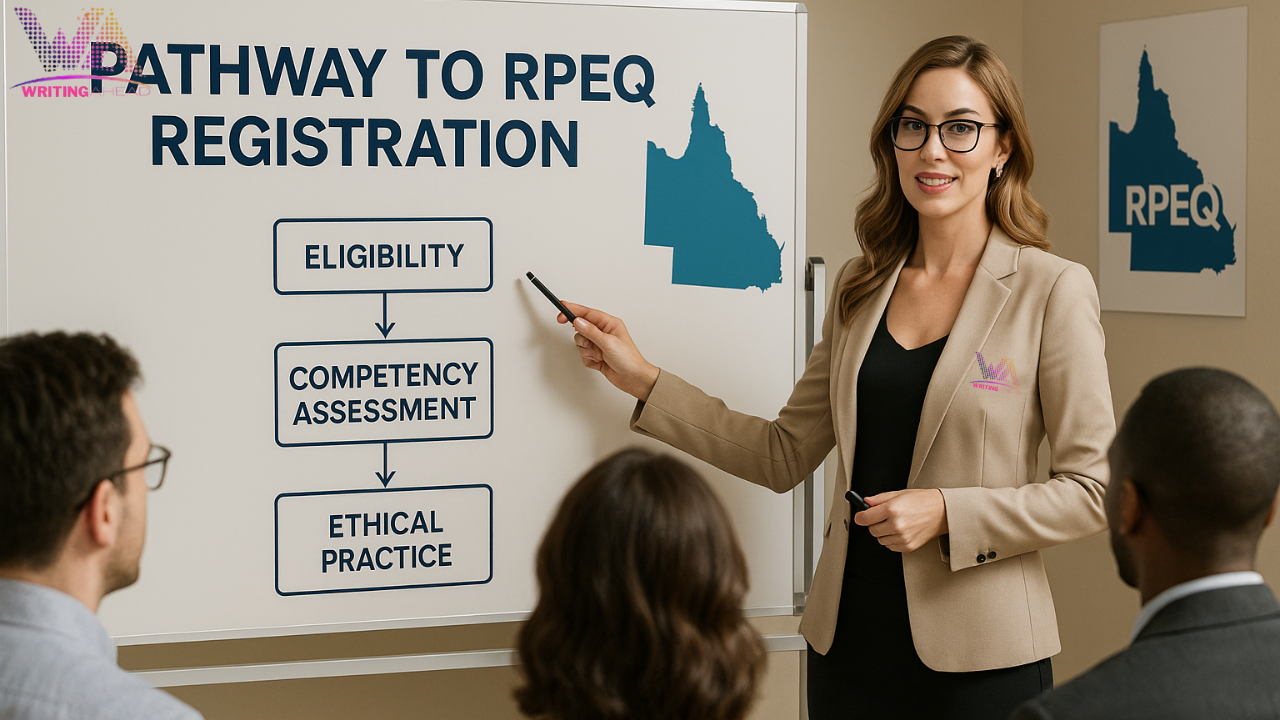RPEQ Register Explained: Your Pathway to Professional Recognition

A friendly, practical guide for engineers thinking about taking the next step
Thinking about becoming an rpeq engineer?
If you’re an engineer working in Queensland—or planning to move your career there—you’ve probably heard about the RPEQ Register. When I first looked into it, it seemed like just another set of letters to add after your name. But as I kept learning, I realised becoming an rpeq engineer is actually a big step towards professional recognition, credibility, and new opportunities.
Let’s break it down together, in plain language, so you can see what it really means and why it matters.
What is the RPEQ Register?
The RPEQ Register is an official list maintained by the Board of Professional Engineers of Queensland (BPEQ). Engineers who appear on this register have been independently assessed as competent and meet Queensland’s legal and professional standards.
RPEQ stands for Registered Professional Engineer of Queensland. Being on this register isn’t just about status—it’s actually a legal requirement if you plan to carry out or directly supervise professional engineering services in Queensland (unless you’re working under the supervision of someone already registered).
Why does becoming an rpeq engineer matter?
Here’s what I realised, and what many engineers find out when they look deeper:
✅ It shows you meet an independent standard of professional competence
✅ You’re legally allowed to sign off on engineering work in Queensland
✅ Employers and clients often prefer or require RPEQ registration for senior roles
✅ It makes your work more trusted—especially for complex projects or government contracts
For many engineers, this isn’t just about meeting a rule—it’s about growing their career and standing out in the industry.
Who needs to be on the RPEQ Register?
The RPEQ Register is for engineers who:
-
Want to offer or directly supervise professional engineering services in Queensland
-
Need to sign off on reports, designs, or certifications
-
Are moving into management or consultancy roles that require them to take legal responsibility for engineering work
Even if you currently work under supervision, becoming an rpeq engineer gives you the freedom to lead projects independently.
How do you get on the RPEQ Register? Step by step
When I looked into it, the process seemed complex at first—but it makes sense once you break it down:
Step 1: Confirm you’re eligible
You’ll need an accredited engineering degree (or an assessed equivalent) and enough work experience to show you’re competent in your field.
Step 2: Competency assessment
Before applying directly to the BPEQ, you need to pass an independent assessment of competence. This is usually done by an approved assessment entity, like:
-
Engineers Australia
-
Professionals Australia
-
AusIMM (for mining engineers)
-
Other specialist bodies, depending on your discipline
Step 3: Prepare your submission
You’ll put together documents showing your work history, project examples, and references from senior engineers who can confirm your role.
Step 4: The assessment itself
This could include written responses, mapping your work to required competencies, and sometimes an interview. It’s your chance to explain what you did, why, and what you learned.
Step 5: Apply to the BPEQ
Once you pass the assessment, you submit your application and pay the registration fee to the BPEQ. If everything checks out, your name is added to the RPEQ Register.
Keeping your name on the RPEQ Register
Once you’re on the register, your responsibility doesn’t stop there. To remain an rpeq engineer, you need to:
-
Renew your registration each year
-
Complete Continuing Professional Development (CPD) to keep your knowledge and skills up to date
This ongoing commitment shows clients and employers you’re serious about maintaining professional standards.
What surprised me about the process
At first, I thought the focus would just be on technical knowledge. But actually, the assessment is as much about your professional judgement, ethics, risk management, and communication.
It’s not about writing essays full of jargon—it’s about showing, in your own words, how you make sound engineering decisions and protect public safety.
Why it feels worth it
Becoming an rpeq engineer and getting listed on the RPEQ Register can:
✅ Open doors to senior or leadership roles
✅ Give you the legal right to sign off on work
✅ Increase trust with clients, contractors, and peers
✅ Help you stand out when bidding for work in Queensland
And for many, it’s also about feeling proud—knowing your experience and professionalism have been formally recognised.
Final thoughts
The RPEQ Register isn’t just an administrative list. It’s a way to prove you meet recognised standards and are committed to doing your work safely and ethically.
If you’re an engineer planning your next step, becoming an rpeq engineer could be a smart investment in your career—showing you don’t just do the work, but do it to the highest professional standard.
From what I’ve seen, it really is a pathway to professional recognition—and it can open new doors you might not have imagined before.
- Art
- Causes
- Best Offers
- Crafts
- Dance
- Drinks
- Film
- Fitness
- Food
- Games
- Festival
- Gardening
- Health
- Home
- Literature
- Music
- Networking
- Other
- Party
- Religion
- Shopping
- Sports
- Theater
- Wellness



